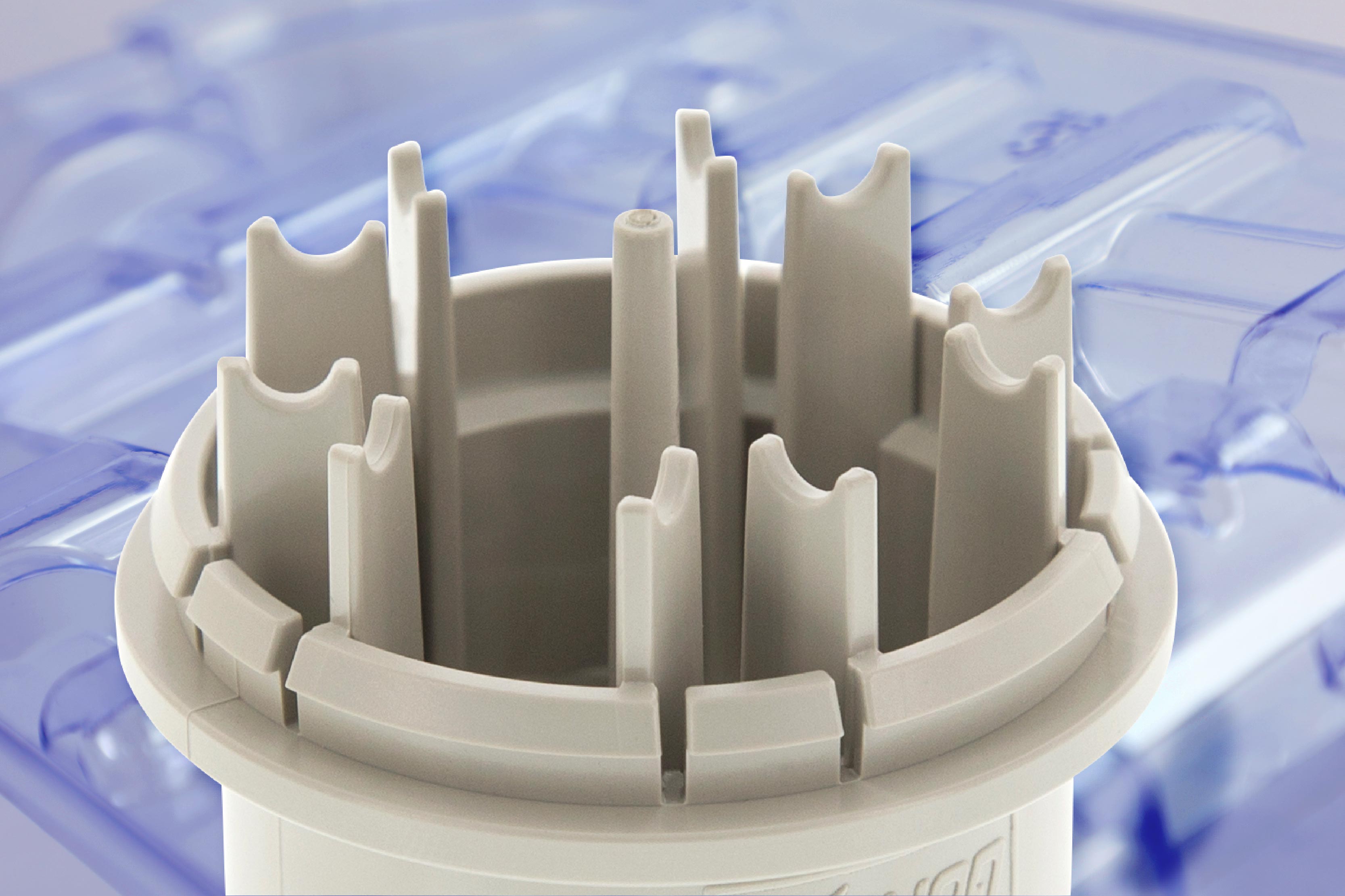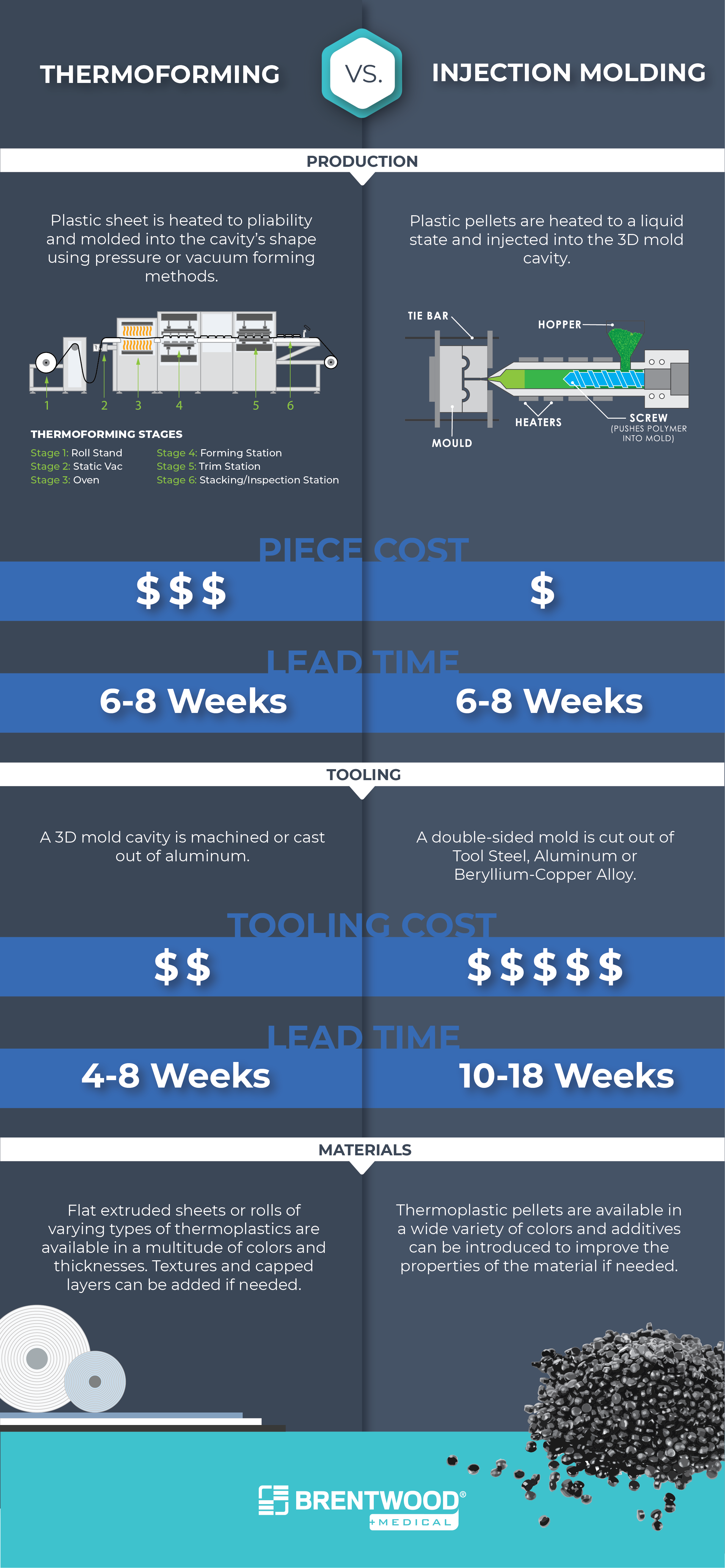Thermoforming and injection molding are two of the most common plastic manufacturing processes. Both processes offer different advantages depending on the specific application, part volume, and budget.
Thermoforming is commonly used for large-footprint parts, projects requiring shorter runs, or packaging. Injection molding is ideal for high-volume projects and small, intricate parts. Typical applications for thermoformed and injection molded plastic parts include construction equipment, medical packaging, nuclear power generation, water purification systems, aerospace and automotive components, and many more.
A question we get frequently is, “Which process makes the most sense for my project?” This is a great question and one that the infographic below will help answer!
Production
One of the major differences between thermoforming and injection molding comes from differences in the production.
With thermoforming, a plastic sheet is heated to pliability and molded into the cavity’s shape using pressure or vacuum forming methods. Whereas injection molding uses plastic pellets by heating them to a liquid state before they are injected into the 3D mold cavity.
These differences in production also create a difference in piece cost. While the piece cost from thermoforming is more expensive than the piece cost from injection molding, the lead time for both is typically the same as 6-8 weeks.
Tooling
Another major difference between thermoforming and injection molding processes comes from the tooling. Thermoforming uses a 3D mold cavity that is machined or cast out of aluminum, while injection molding uses a double-sided mold cut out of tool steel, aluminum, or a beryllium-copper alloy.
Because of the differences in tooling, thermoforming tooling costs fall far below that of injection molding. Not only are the tooling costs lower for thermoforming, but the tooling lead time also usually takes half the time at 4-8 weeks versus 10-18 weeks for injection molding.
Materials
The final difference between thermoforming and injection molding Processes are in the materials used.
Thermoforming uses flat extruded sheets or rolls of varying types of thermoplastics that are available in a multitude of colors and thicknesses. Textures and capped layers can then be added if needed.
Instead of sheets or rolls of plastics, injection molding uses thermoplastic pellets that are available in a wide variety of colors. Additives can be introduced to improve the properties of the material if needed.
The differences between thermoforming and injection molding processes can be confusing. For a more in-depth explanation of thermoforming, check out our thermoforming introductory blog post. If you’re still not sure which process is best for your project, contact one of our in-house design engineers today to help you pick the best one for your application.



0 Comments